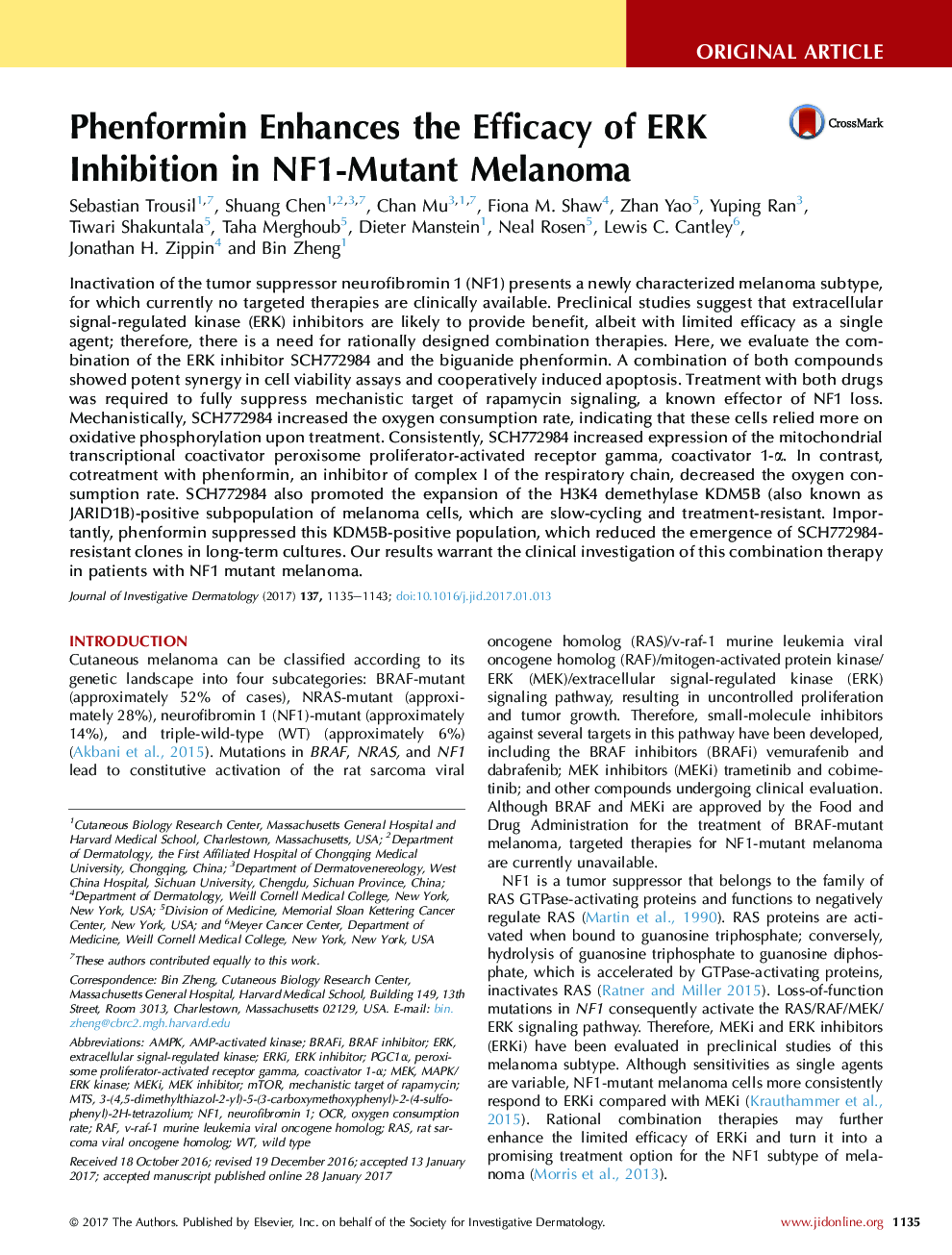| Article ID | Journal | Published Year | Pages | File Type |
|---|---|---|---|---|
| 5649520 | Journal of Investigative Dermatology | 2017 | 9 Pages |
Abstract
Inactivation of the tumor suppressor neurofibromin 1 (NF1) presents a newly characterized melanoma subtype, for which currently no targeted therapies are clinically available. Preclinical studies suggest that extracellular signal-regulated kinase (ERK) inhibitors are likely to provide benefit, albeit with limited efficacy as a single agent; therefore, there is a need for rationally designed combination therapies. Here, we evaluate the combination of the ERK inhibitor SCH772984 and the biguanide phenformin. A combination of both compounds showed potent synergy in cell viability assays and cooperatively induced apoptosis. Treatment with both drugs was required to fully suppress mechanistic target of rapamycin signaling, a known effector of NF1 loss. Mechanistically, SCH772984 increased the oxygen consumption rate, indicating that these cells relied more on oxidative phosphorylation upon treatment. Consistently, SCH772984 increased expression of the mitochondrial transcriptional coactivator peroxisome proliferator-activated receptor gamma, coactivator 1-α. In contrast, cotreatment with phenformin, an inhibitor of complex I of the respiratory chain, decreased the oxygen consumption rate. SCH772984 also promoted the expansion of the H3K4 demethylase KDM5B (also known as JARID1B)-positive subpopulation of melanoma cells, which are slow-cycling and treatment-resistant. Importantly, phenformin suppressed this KDM5B-positive population, which reduced the emergence of SCH772984-resistant clones in long-term cultures. Our results warrant the clinical investigation of this combination therapy in patients with NF1 mutant melanoma.
Keywords
NF1MEKiBRAFiPGC1αOCRAMPKMTSRAFRASERKmTOR3-(4,5-dimethylthiazol-2-yl)-5-(3-carboxymethoxyphenyl)-2-(4-sulfophenyl)-2H-tetrazoliumMAPK/ERK kinaseMEKMEK inhibitorErk inhibitorBRAF inhibitorOxygen consumption rateNeurofibromin 1wild typeMechanistic target of rapamycinextracellular signal-regulated kinaseAMP-activated kinase
Related Topics
Health Sciences
Medicine and Dentistry
Dermatology
Authors
Sebastian Trousil, Shuang Chen, Chan Mu, Fiona M. Shaw, Zhan Yao, Yuping Ran, Tiwari Shakuntala, Taha Merghoub, Dieter Manstein, Neal Rosen, Lewis C. Cantley, Jonathan H. Zippin, Bin Zheng,
